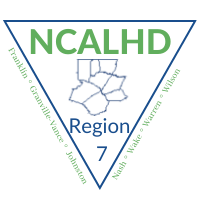Increase the Number of Small Retail Stores that Offer and Promote Healthy Good and Beverages
STRATEGY DEFINITION
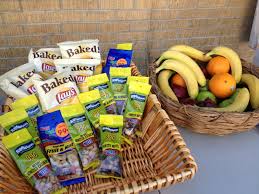 The NC Community Transformation Grant (CTG) Project defines a small food retail store as a corner, convenience, or dollar store up to 10,000 square feet in size that promotes the sale of healthy foods and beverages through stocking and marketing items such as fresh produce. In addition, targeting stores in food deserts (according to USDA Food Atlas definition) and those located near schools is also a priority.
The NC Community Transformation Grant (CTG) Project defines a small food retail store as a corner, convenience, or dollar store up to 10,000 square feet in size that promotes the sale of healthy foods and beverages through stocking and marketing items such as fresh produce. In addition, targeting stores in food deserts (according to USDA Food Atlas definition) and those located near schools is also a priority.
Low‐income communities and neighborhoods with limited access to public and private transportation often rely on corners stores as their main grocer. Across the country, innovative programs and policy efforts are helping to re-stock convenience stores with healthier foods, and link small farmers and their fresh produce directly to consumers.
Planning for improvement in overall community health should include access to affordable and healthy
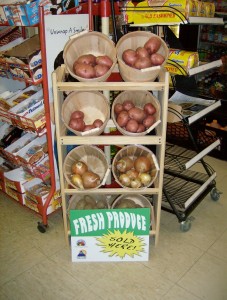
eating. Planners, local government officials, food retailers, and food policy councils are among those who can help ensure a healthy eating environment in their community. Improving food access for everyone demands multiple approaches to meet the different needs of diverse communities.
NC CTG Project Guidelines for a healthy small food retail store:
- Stores must, at minimum, meet the requirements of a Tier I store (reference CTG Project Healthy Small Food Retail Store Tiers). North Carolina items are encouraged.
- All stores must include healthy food advertising and promotion in addition to strategic placement of healthy products.
MILESTONES (Not listed in chronological order)
a) Identify and engage partners
a. Successful healthy small retail projects can include many of the following partners: Schools, Universities, Health Departments, DSS, Cooperative Extension, Local Chambers of Commerce, Farmers, Food Suppliers, Economic Development Commissions, Media, Elected Officials, among many others.
b) Assess the community
a. Identify existing small retail stores in food desert locations, including those that are located near middle and high schools where students frequently visit the store before, during, and after school hours.
b. Survey residents to determine key issues.
- What food is available and accessible?
- Where do most people do most of their shopping?
- What types of foods would people buy if available and affordable?
c) Identify small retail stores and build relationships
a. Get to know local small food retailers. Determine their needs and look for ways to meet these needs while also helping the community.
- Find store owners who are interested in offering healthy options
- Work with local federally funded nutrition programs, SNAP, to find which convenience stores already accept SNAP
- Use surveys to determine what foods the store already stocks, how easy it is to stock healthy foods and beverages, and what the store owner’s needs and wants are for the store.
d) Determine the goals of the project
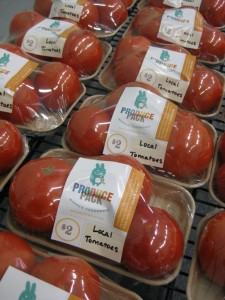 a. When identifying goals, convenience store owners/managers should consider the following questions:
a. When identifying goals, convenience store owners/managers should consider the following questions:
- How many people live in the community?
- Who shops at the store and what would they buy?
- What approaches would work for the store?
- What does the store owner want for his/her business?
e) Identify incentives for store owners
a. Store owners might care about the health of their customers but they still need to make a profit. To help store owners do both, look for incentives to stock healthier options.
- SNAP can help low income individuals buy healthier foods and increase business for the store owners
- Assist stores to qualify as SNAP vendors
- Provide free in-store promotions and media
- Assist stores in applying for small loans and grants for store improvements that would allow them to provide healthier foods and beverages
- Government programs can provide tax credits for new or existing stores based on their stock and supply of healthy foods
- Government programs can also create policies for land use and zoning that would encourage or require food retail stores in specified areas to increase the amount of healthy food items in their stock
- Train store owners on how to buy, stock, and price healthy foods
- Form a network of small food retailers to buy healthy foods in bulk to make it more affordable for store owners to stock healthy foods
f) Design the intervention
a. Develop goals and objectives that are measurable
b. Define roles and responsibilities of each of the partners
c. Timelines
d. Plan a promotional campaign
e. Develop a realistic evaluation process
g) Develop a promotional campaign
a. Good promotion is important for a healthy small food retail store project to succeed. There are many marketing strategies to use.
- In-store ads and promotional materials that highlight the new healthy food options
- Culturally appropriate promotional tools to educate people about the project and healthy eating are important
- Advertising and public relations (such as direct mailers, placing ads in newspapers, radio, TV, press releases and inviting local media to visit a participating store)
- On-site cooking demonstrations and taste-testing to increase consumer involvement
- Free recipes to educate consumers on how these foods can be added into their diets and be healthful at the same time
- Coupons (supported by partners outside of CTG) and direct mail to households in the closest neighborhoods
h) Implement the intervention
a. Revisit your project plan often to revise and update as appropriate
i) Evaluate the intervention
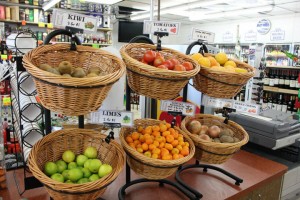 a. Evaluation is necessary for long-term success of the project. It allows you to show the value of the program. It highlights obstacles and lessons learned. Include the following as a guide:
a. Evaluation is necessary for long-term success of the project. It allows you to show the value of the program. It highlights obstacles and lessons learned. Include the following as a guide:
- Develop a timeline and methods for how you plan to evaluate
- Have a plan for gathering feedback from community members, store owners, and project partners (success stories)
- Is it possible to get sales data from store owners?
Resources
Go Healthy Here Resource: http://issuu.com/leahferguson/docs/ctg_go_healthy_here__tool_kit___app
The Food Trust: http://thefoodtrust.org/
